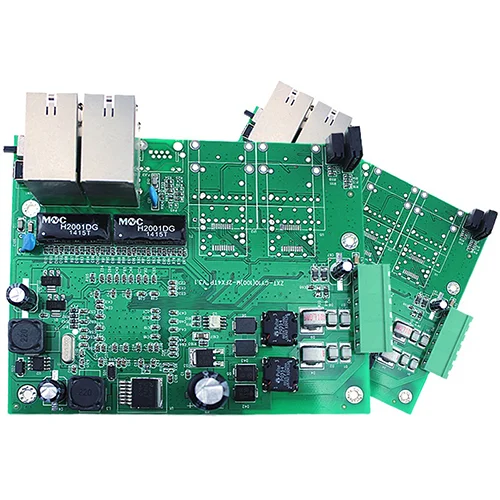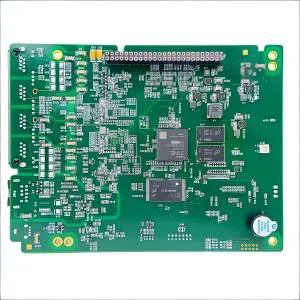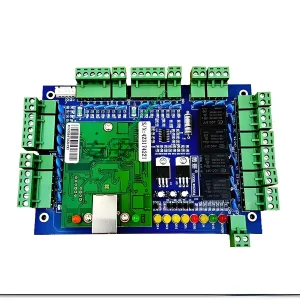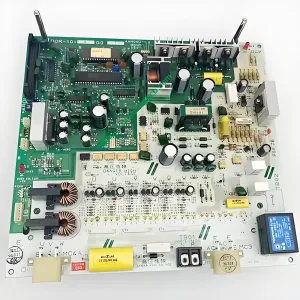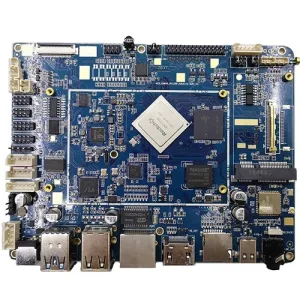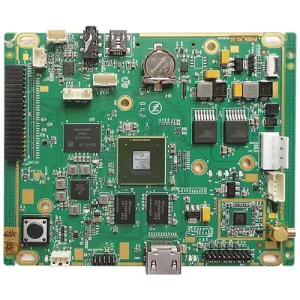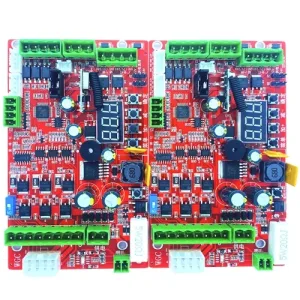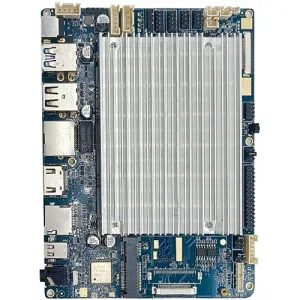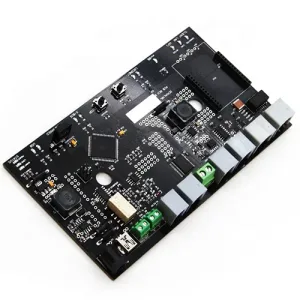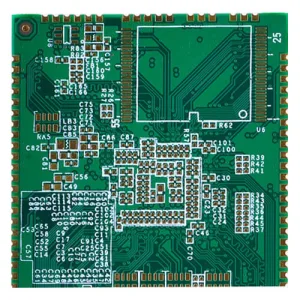GPS fait référence au système de positionnement mondial.
Il peut fournir un positionnement précis, Mesure de vitesse et temps standard de haute précision pour la majeure partie de la surface de la Terre (98%), et peut satisfaire des utilisateurs militaires situés n'importe où sur le sol ou dans un espace proche de la terre pour déterminer en continu et avec précision la position tridimensionnelle, tridimensionnel pour les sports et les exigences de temps, Le GPS civil peut également atteindre une précision de positionnement d'environ dix mètres.
Aperçu
Définition
Le système de positionnement global (GPS) est une nouvelle génération de navigation par satellite spatiale et de système de positionnement développé conjointement par l'armée américaine, Marine et Force aérienne dans les années 1970. Son objectif principal est de fournir en temps réel, Services de navigation tous temps et mondiaux pour les trois principaux domaines du terrain, mer et air, et pour les utiliser à des fins militaires telles que la collecte de renseignements, Surveillance de l'explosion nucléaire et communications d'urgence. C'est une partie importante de la stratégie mondiale de domination mondiale américaine. Ceci est un système satellite composé de 24 Satellites couvrant le globe. Ce système peut garantir qu'à tout moment, Tout point sur la terre peut observer quatre satellites en même temps, afin de s'assurer que le satellite peut collecter la latitude, longitude et altitude du point d'observation, afin de réaliser des fonctions telles que la navigation, positionnement, et le timing. le
Introduction
Le GPS peut fournir des fonctions telles que le positionnement des véhicules, antivol, anti-vol, Commande de surveillance et d'appel des itinéraires de conduite. Pour réaliser que toutes les fonctions ci-dessus doivent avoir trois éléments de terminal GPS, réseau de transmission et plate-forme de surveillance.
Principe de travail
Principe de positionnement
Le principe de base du système de navigation GPS est de mesurer la distance entre le satellite connu et le récepteur de l'utilisateur, puis intégrer les données de plusieurs satellites pour connaître la position spécifique du récepteur. Pour atteindre cet objectif, La position du satellite se trouve dans les éphémérides satellites en fonction du temps enregistré par l'horloge embarquée. La distance entre l'utilisateur et le satellite est obtenue en enregistrant le temps pris par le signal satellite pour se propager à l'utilisateur, puis le multiplier par la vitesse de la lumière (En raison de l'interférence de l'ionosphère atmosphérique, Cette distance n'est pas la véritable distance entre l'utilisateur et le satellite, Mais pseudo-gamme (RP,): Lorsque le satellite GPS fonctionne normalement, Il transmettra continuellement des messages de navigation avec des codes pseudo-aléatoires (appelé pseudo-codes) composé de 1 et 0 symboles binaires. Il existe deux types de pseudo-codes utilisés par le système GPS, respectivement, c'est le code C / A pour une utilisation civile et le P(Oui) Code à usage militaire. La fréquence du code C / A est de 1,023 MHz, La période de répétition est 1 millisecondes, Et l'espacement du code est 1 microseconde, ce qui équivaut à 300m; La fréquence du code P est de 10,23 MHz, Et la période de répétition est 266.4 jours. L'espacement du code est 0.1 microsecondes, ce qui équivaut à 30m. Le code Y est formé sur la base du code P, ce qui a une meilleure confidentialité. Le message de navigation comprend des éphémérides satellites, statut de travail, correction d'horloge, Correction de retard ionosphérique, et correction de réfraction atmosphérique. et d'autres informations. Il est démodulé à partir du signal satellite et transmis sur la fréquence porteuse avec une modulation 50b / s. Chaque cadre principal du message de navigation contient 5 sous-cadres et chaque trame dure 6s de long. Les trois premiers cadres ont chacun 10 codes; Il répète chaque 30 secondes et mises à jour toutes les heures. Les deux dernières images sont 15000b au total. Le contenu du message de navigation comprend principalement le code de télémétrie, code de conversion, et blocs de données 1, 2, et 3, dont les données d'éphémat. Lorsque l'utilisateur reçoit le message de navigation, Extraire le temps du satellite et comparez-le avec sa propre horloge pour connaître la distance entre le satellite et l'utilisateur, puis utilisez les données d'éphémères satellites dans le message de navigation pour calculer la position du satellite lorsque le message est lancé , la position de l'utilisateur, La vitesse et d'autres informations dans le système de coordonnées géodésiques du WGS-84 peuvent être connues.
On peut voir que le rôle de la partie satellite du système de navigation GPS est de transmettre en continu des messages de navigation. Cependant, Puisque l'horloge utilisée par le récepteur de l'utilisateur et l'horloge embarquée du satellite ne peut pas toujours être synchronisée, en plus des coordonnées tridimensionnelles de l'utilisateur x, y, z, A ΔT, qui est le décalage horaire entre le satellite et le récepteur, doit être introduit comme un inconnu. Puis utiliser 4 équations pour résoudre ces 4 inconnus. Donc, si vous voulez savoir où se trouve le récepteur, vous devez être en mesure de recevoir des signaux d'au moins 4 satellites.
Le récepteur GPS peut recevoir des informations de temps exactes au niveau de la nanoseconde qui peut être utilisé pour le timing; Les éphémérides prévisionnelles utilisées pour prédire la position approximative du satellite dans les prochains mois; L'éphémème de diffusion utilisé pour calculer les coordonnées satellites requises pour le positionnement , La précision est de plusieurs mètres à des dizaines de mètres (différent de chaque satellite et change à tout moment); et les informations du système GPS, comme le statut satellite, etc..
La distance entre le satellite et le récepteur peut être obtenue par la mesure du code par le récepteur GPS. Car il contient l'erreur de l'horloge satellite du récepteur et l'erreur de propagation atmosphérique, il s'appelle pseudorange. Le pseudo-gamme mesuré par le code CA est appelé CA Code Pseudo-Range, Et la précision est à propos 20 mètres. Le pseudo-gamme mesuré par le code p est appelé code p pseudo-gamme, Et la précision est à propos 2 mètres.
Le récepteur GPS décode le signal satellite reçu ou utilise d'autres techniques pour supprimer les informations modulées sur le transporteur, Et puis le transporteur peut être restauré. À proprement parler, La phase porteuse doit être appelée la phase de batterie, qui est la différence entre la phase porteuse du signal satellite reçu affecté par le décalage de fréquence Doppler et la phase du signal généré par l'oscillation locale du récepteur. En général, Il est mesuré à l'époque de l'époque déterminée par l'horloge du récepteur, et la valeur de changement de phase peut être enregistrée en gardant une trace du signal satellite, Mais la valeur initiale de la phase du récepteur et de l'oscillateur satellite au début de l'observation n'est pas connu, Au début, l'entier de phase de la première époque est également inconnu, c'est, L'ambiguïté entière, qui ne peut être résolu que comme paramètre dans le traitement des données. La précision de la valeur d'observation de phase est aussi élevée que les millimètres, Mais la prémisse est de résoudre l'ambiguïté de tout le cercle. Donc, La valeur d'observation de phase ne peut être utilisée que lorsqu'il y a un positionnement relatif et une valeur d'observation continue, et la précision de positionnement mieux que le niveau du compteur ne peut être atteint que. Les observations de phase peuvent être utilisées.
Selon la méthode de positionnement, Le positionnement GPS est divisé en positionnement à point unique et positionnement relatif (positionnement différentiel). Le positionnement à point unique est un moyen de déterminer la position d'un récepteur en fonction des données d'observation d'un récepteur. Il ne peut utiliser que des observations à pseudo-portée et peut être utilisé pour la navigation brut et le positionnement des véhicules et des navires. Positionnement relatif (positionnement différentiel) est une méthode pour déterminer la position relative entre les points d'observation en fonction des données d'observation de deux ou plusieurs récepteurs. Il peut utiliser l'observation pseudo-gamme ou l'observation de phase. Une étude géodétique ou une étude d'ingénierie doit être d'utiliser des observations de phase pour le positionnement relatif.
Les observations GPS comprennent des erreurs telles que l'erreur d'horloge du satellite et le récepteur, le retard de propagation atmosphérique, et l'effet de trajets multiples. Le calcul du positionnement est également affecté par l'erreur d'éphémère diffusée par satellite, et la plupart des erreurs courantes sont éliminées lors de la réalisation de positionnement relatif. compenser ou affaiblir, La précision du positionnement sera donc considérablement améliorée. Le récepteur à double fréquence peut compenser la partie principale de l'erreur ionosphérique dans l'atmosphère en fonction des observations des deux fréquences. Lorsque la précision est élevée et que la distance entre les récepteurs est longue (L'atmosphère a des différences évidentes ), Un récepteur à double fréquence doit être sélectionné.
Le principe de base du positionnement GPS est d'utiliser la méthode de résection de la distance spatiale pour déterminer la position du point à mesurer en fonction de la position instantanée du satellite en mouvement à grande vitesse comme données de départ connues. Comme indiqué sur la figure, en supposant qu'un récepteur GPS est installé au point à être mesuré sur le sol au temps t, Le temps ΔT lorsque le signal GPS arrive au niveau du récepteur peut être mesuré, et les quatre facteurs suivants peuvent être déterminés en ajoutant les éphémérides satellites et les autres données reçues par les équations du récepteur.
Précision de positionnement
28 satellites (y compris 4 sauvé) ont déjà été lancés dans l'espace, Et ils sont distribués sur 6 plans orbitaux dont les intersections 60 des diplômes à part, à propos 20,000 kilomètres au-dessus du sol. La précision de la navigation autonome est à propos 10 mètres, et la précision du positionnement intégré peut atteindre les niveaux de centimètres et millimètres. Mais la précision de l'ouverture dans le domaine civil est à propos 10 mètres.
Composant
Partie spatiale
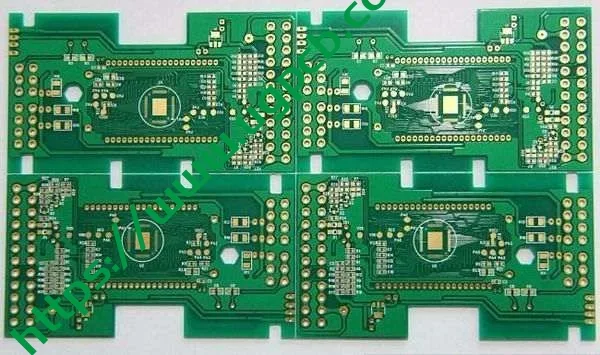
La partie spatiale du GPS est composée de 24 satellites (21 satellites de travail; 3 satellites de rechange), qui sont situés dans le ciel au-dessus de 20200 km de la surface de la Terre, Et le cycle d'opération est de 12h. Les satellites sont uniformément distribués 6 avions orbitaux (4 sur chaque plan orbital), et l'inclinaison orbitale est de 55 °. La distribution des satellites permet d'observer plus que 4 satellites partout dans le monde à tout moment, et peut pré-stocker des informations de navigation dans les satellites. En raison de problèmes tels que la friction atmosphérique, La précision de navigation des satellites GPS diminuera progressivement avec le temps. .
système de contrôle du sol
Le système de contrôle du sol se compose de la station de surveillance, la station de surveillance maîtresse, et l'antenne au sol. La station de contrôle maître est située à Springfield, Colorado, USA. La station de commande au sol est responsable de la collecte des informations renvoyées par le satellite, et calculer les éphémérides satellites, Distance relative, Correction atmosphérique et autres données.
Partie d'équipement utilisateur
La partie de l'équipement utilisateur est le récepteur de signal GPS. Sa fonction principale est de pouvoir capturer les satellites à mesurer sélectionnés en fonction d'un certain angle de coupure du satellite, et suivre le fonctionnement de ces satellites. Lorsque le récepteur capture le signal satellite suivi, Il peut mesurer le taux de variation de la portée pseudo et de la distance de l'antenne de réception vers le satellite, et démoduler les paramètres d'orbite satellite et autres données. Selon ces données, L'ordinateur de micro-traitement dans le récepteur peut effectuer un calcul de positionnement selon la méthode de la solution de positionnement, et calculer la latitude et la longitude, altitude, vitesse, temps et autres informations sur l'emplacement géographique de l'utilisateur. Le matériel du récepteur et les logiciels intégrés ainsi que le progiciel de post-traitement pour les données GPS constituent un équipement utilisateur GPS complet. La structure du récepteur GPS est divisée en deux parties, L'unité d'antenne et l'unité de réception. Le récepteur adopte généralement deux types de sources d'énergie DC, À l'intérieur et à l'extérieur de la machine. Le but de régler l'alimentation interne est d'observer en continu sans interruption lorsque l'alimentation externe est remplacée. La batterie interne est automatiquement chargée lorsque l'alimentation externe est utilisée. La batterie intégrée alimente la mémoire RAM après l'arrêt pour éviter la perte de données. Différents types de récepteurs deviennent plus petits et plus légers, qui sont pratiques pour l'observation sur le terrain. Le second est les récepteurs utilisateur. Il existe actuellement deux types de récepteurs unifréquences et à double fréquence. Cependant, En raison de facteurs de prix, La plupart des utilisateurs achètent des récepteurs à une seule fréquence.
Développement du marché
Le potentiel de marché de la navigation GPS en Chine est énorme. À la fin de 2005, il y avait moins de 100,000 Véhicules avec équipement de navigation embarqué en Chine, et par rapport au nombre total de 30 millions de véhicules, Le taux de pénétration était inférieur à 1%. Au Japon, Le taux d'installation de navigation en voiture est aussi élevé que 59%, et en Europe et aux États-Unis représentent environ 25%. Dans 2006, Le marché portable de la navigation devrait avoir une échelle de presque 500 Millions de yuans. Avec le développement rapide du marché et l'émergence de nouvelles marques, On estime que les ventes des terminaux du système de navigation GPS de voiture chinois seront proches de 10 milliards de yuans 2009.
2008 est connu comme le “première année de 3G” en Chine. Comme nous le savons tous, Dans le domaine des communications domestiques, Le plus chaud est la norme TD-SCDMA— - 3G qui est en opération d'essai. En tant que nouvelle génération de technologies de communication, 3G apporte aux gens beaucoup d'attentes. L'émission complète des licences 3G est également devenue l'attention de l'attention commune. En fait, Le champ de navigation GPS domestique est également en cours de transformation. La troisième génération de produits de navigation PND est apparue comme le temps nécessite, qui a amené les gens dans une nouvelle ère de navigation.
L'industrie des applications de navigation par satellite joue un rôle de plus en plus important dans l'économie nationale et deviendra le point culminant du onzième plan quinquennal. Pendant “Onzième plan quinquennal” période, La navigation par satellite sera utilisée dans d'autres domaines tels que l'aviation, mer, chemin de fer, construction, et les télécommunications, il y aura beaucoup de place au développement dans des applications telles que l'électricité et l'électricité.
La tendance de développement de la technologie de navigation par satellite se manifeste principalement dans trois aspects: d'abord, La coexistence de plusieurs systèmes de navigation par satellite, qui améliore la disponibilité du système et étend le champ de demande; deuxième, La technologie de navigation multi-composants est promue et appliquée, Incluant principalement le GPS et la communication mobile l'application combinée du positionnement de la station de base, gyroscope, Technologie des calculs morts, etc.; Le troisième est la combinaison de la navigation par satellite et d'autres technologies élevées telles que la communication sans fil, comme les récepteurs GPS intégrés dans les téléphones cellulaires, PC PORTABLE, PDAS et montres, etc.. Communication, Produits de sécurité et de consommation Les produits électroniques favorisent fondamentalement le développement global de la technologie informatique.
Comment acheter
Qualité
Lors du choix des produits de navigation GPS, La configuration des logiciels et du matériel est très importante. En général, La configuration matérielle des fabricants de marques professionnelles est plus fiable. Certains fabricants GPS contrefaits fabriquent souvent des configurations matérielles, Rendant difficile la garantie de la qualité du produit en termes d'écrans LCD, Puces GPS, et processeurs. Le processus de production de l'ensemble de leur produit GPS n'est rien d'autre qu'une simple intégration et assemblage de matériel. La configuration matérielle des fabricants GPS réguliers doit souvent passer par des couches de chèques, et doit passer les normes de production de qualité ISO (Certification de qualité principalement ISO2000, Certification environnementale ISO14001) et autres certifications. Pour les produits automobiles, uniquement à travers “Certification standard ISO / TS TS16949” Pouvons-nous fournir des produits et des services à Mercedes-Benz, Volkswagen et autres constructeurs automobiles.
Logiciel
En termes de logiciel, Le plus concerné est naturellement la précision des données de la carte de navigation GPS et la rapidité des mises à jour. La mise à jour fréquente des cartes a entraîné des coûts de production élevés des cartes électroniques, Tant de fabricants GPS non qualifiés réduiront les mises à jour de la carte ou le pirate d'autres cartes électroniques. Si les consommateurs utilisent “faux et mauvaise” Cartes pour la navigation machine, Ils non seulement facilement “s'égarer”, mais peut même être mortel.
Marque
En fait, L'importance de la marque dépasse de loin l'autre. Étant donné que l'industrie de la navigation par satellite en Chine est une industrie de haute technologie au stade de développement, Seuls les fabricants professionnels qui travaillent sur le marché depuis de nombreuses années peuvent garantir l'avantage de tête de la technologie des produits, Et en même temps, avoir les fonds et la force pour fournir aux utilisateurs une garantie de service complète et excellente .
Le prix du produit et du service après-vente sont également les principaux facteurs à considérer lors de l'achat d'un produit. Les consommateurs espèrent acheter des produits de haute qualité et à faible coût, Mais le résultat n'est peut-être pas ce qu'ils veulent. De nombreux produits de navigation sur le marché sont “bon marché” mais pas “bonne qualité”. Donc, On rappelle aux consommateurs ici de ne pas être aveuglés par des prix bas simplement anormaux lors de l'achat de produits. Pour les produits de navigation qui sont étroitement liés à vos propres aventures de voyage et de voyage, Vous ne devez pas être avare de payer pour le vôtre “sécurité des voyages”.
En tant que produit de navigation GPS, La mise à niveau de la technologie du produit et la mise à jour des données de carte sont très importantes. Seuls les fabricants de marques professionnelles peuvent fournir aux consommateurs de tels services en temps opportun.
Malentendu
Après la troisième baisse consécutive des prix du pétrole, il a inauguré une troisième augmentation consécutive. Les débutants qui viennent d'acheter une voiture sont encore plus inquiets qu'ils aillent dans le mauvais sens, et toutes les habitudes de conduite économes en carburant seront vaines. Donc, Après avoir acheté une voiture, De plus en plus de recrues envisageront d'acheter un navigateur automobile. Cependant, Le journaliste a trouvé que, En plus des défauts du produit de navigation lui-même, Les propriétaires de voitures ont des malentendus, peu importe le test statique lors de l'achat ou dans le processus de demande réel.
Ne soyez pas superstitieux sur la vitesse de la recherche d'étoiles lors de l'achat
Généralement, dans le magasin où le navigateur GPS est acheté, Le vendeur montrera aux consommateurs à quelle vitesse le signal de réception par satellite du produit est. Généralement, Le GPS est divisé en trois méthodes: démarrage à chaud, Démarrage à froid et démarrage chaud. Cependant, En train de vendre des navigateurs, Certains vendeurs ont délibérément changé le concept et utilisé GPS dans différents états pour comparer la vitesse de recherche. En général, Quand il est utilisé pour la première fois, La batterie est épuisée et les informations sont perdues, ou le dispositif de réception est déplacé plus que 1000 kilomètres dans l'état hors, La vitesse de positionnement du début du Cold GPS est beaucoup plus lente que la vitesse de positionnement de début chaud.
En fait, De nombreux consommateurs apprécient le positionnement ultra-rapide, Mais l'étoile de recherche super rapide montrée par le personnel des ventes n'est peut-être pas vraiment rapide, Parce qu'il est nécessaire de distinguer les différents états de démarrage chaud et froid. Par exemple, Certains produits GPS sur le marché sont équipés d'une technologie de positionnement ultra-rapide à chaud. , Comparé à d'autres produits sans technologie de positionnement ultra-rapide, la vitesse de positionnement est plus de deux fois plus rapide.
Plus de langues ne sont pas plus pratiques
Dans les applications pratiques, dans la plupart des cas, La voix du produit est utilisée pour naviguer. Donc, De plus en plus de produits ont un argument de vente supplémentaire de “sélection multilingue”. En plus du mandarin et de l'anglais le plus commun, Cantonais et hakka apparaissent également. , Dialecte de chaozhou, Dialecte du nord-est, Dialecte du Sichuan et autres dialectes. Donc, Certains consommateurs sentent que c'est “capacité linguistique” est super fort lors de l'achat. Cependant, Certains consommateurs ont signalé après l'avoir utilisé qu'en fait, C'est toujours le mandarin qui peut mieux exprimer la situation réelle sur la route. D'autres langues expriment uniquement des informations simples telles que les noms de route et les distances dans les dialectes locaux. Donc, Dans l'expression des informations de navigation, Les gens se sentent bizarres.
Comparez la planification de l'itinéraire des attractions ultra-distance
Lors du choix d'un produit de navigation, La vitesse de sa planification d'itinéraire et de la vitesse de calcul est un aspect important pour mesurer la qualité du produit. Donc, Certains consommateurs aiment saisir des informations sur les routes locales pour tester le fonctionnement du produit lors de l'achat, Mais ce n'est pas suffisant. Vous pouvez essayer de définir des endroits extrêmement lointains, comme le Tibet, Xinjiang, Mongolie intérieure, Jilin et d'autres attractions touristiques comme destinations, Pour tester la vitesse de calcul de la machine. De plus, il vaut mieux entrer plusieurs autres destinations distantes de ce type. Pendant l'utilisation, Le journaliste a constaté que si le palais de Potala au Tibet est défini comme destination, Certains produits peuvent planifier l'itinéraire relativement rapidement, Mais si certains taches panoramiques de Jilin et de la Mongolie intérieure sont définies comme destination et laissez-la calculer, Le produit sera progressivement il y a un phénomène de fonctionnement lent ou même de crash. Si la progression de chaque état de calcul de la machine peut être achevée en peu de temps à partir de 0% à 100%, il prouve que sa qualité de fonctionnement peut être garantie. Cependant, Si certaines machines semblent très lentes ou même s'écrase lorsque l'écran atteint 60%-70%, Ce type de machine ne convient évidemment pas aux consommateurs qui aiment voyager en voiture.
Entrez les points d'intérêt pour comparer le montant des informations de carte
La plupart des marques de navigateurs GPS sur le marché choisiront un fournisseur de carte électronique fixe pour coopérer avec. Cependant, Il convient de noter que ce type de carte électronique qui répond à la qualification nationale de publication a généralement les mêmes informations sur les données, Mais il y a des différences entre le nord et le sud. Les cartes électroniques de certaines entreprises visent le marché sud. Donc, Les utilisateurs constateront que le montant des informations sur certains points d'intérêt locaux sera très riche. Prendre un peu d'immobilier dans la banlieue comme exemple, Une carte électronique qui se concentre principalement sur le marché sud, Même les noms de différents districts peuvent être affichés. Et certaines cartes électroniques qui se concentrent sur le marché du nord ne peuvent même pas trouver ce bien immobilier. Donc, Lors de l'achat, Les consommateurs peuvent comparer si le contenu de l'information des cartes électroniques de différents produits est riche en fonction de leurs propres besoins. Par exemple, Après avoir sélectionné le district de Chancheng, Vous pouvez saisir les noms de certaines sociétés de restauration de chaîne pour voir laquelle est la plus détaillée dans la même zone. Par conséquent, Certaines cartes ont montré deux douzaines, Mais d'autres n'ont montré qu'une douzaine.
Ne jugez pas les avantages et les inconvénients des produits en fonction de routes familières
Lors de l'achat, Beaucoup de gens saisiront immédiatement le départ et la destination de leur conduite fréquente pour voir si l'itinéraire qu'il guide correspond à leur itinéraire de conduite fréquente, afin de juger de la qualité du produit. En fait, Ce n'est pas entièrement vrai. Certains propriétaires de voitures qui utilisent souvent le navigateur ont dit que sous la prémisse sans embouteillages, L'itinéraire recommandé par le navigateur est souvent plus proche. On peut voir que si le propriétaire de la voiture est plus familier avec le départ et la destination, Il est facile de douter de la voie guidée du navigateur. Cependant, Bien que l'itinéraire guidé par le navigateur soit relativement proche, Il y aura également des situations où les conditions routières guidées par le navigateur sont extrêmement médiocres, ou même difficile à passer.
GPS
Définition
Le système de positionnement GPS fait référence à un système qui utilise des satellites pour effectuer un positionnement et une navigation en temps réel dans le monde entier, appelé GPS (Système de positionnement global). La fonction du système de positionnement GPS doit avoir trois éléments: Terminal GPS, réseau de transmission et plate-forme de surveillance; Ces trois éléments sont indispensables; à travers ces trois éléments, fonctions telles que le véhicule antivol, anti-vol, La commande de surveillance et d'appel des itinéraires de conduite peut être fournie.
Constituer
Partie spatiale
La partie spatiale du système de positionnement GPS est composée de 24 Satellites de travail GPS. Ces satellites GPS fonctionnant ensemble forment la constellation du satellite GPS, dont 21 sont des satellites qui peuvent être utilisés pour la navigation, et 3 sont des satellites de sauvegarde actifs. Ces 24 Les satellites sont distribués autour de la Terre en six orbites avec un angle d'inclinaison de 55 °. La période orbitale du satellite est à propos 12 heures sidérales. Chaque satellite de travail GPS envoie un signal de navigation et de positionnement. Ce sont ces signaux que les utilisateurs GPS utilisent pour faire leur travail. On peut voir que la fonction de la partie satellite du système de positionnement GPS est de transmettre en continu des messages de navigation.
Section de contrôle
La partie de contrôle du système de positionnement GPS est composée d'un système de surveillance composé de plusieurs stations de suivi distribuées dans le monde. Selon leurs différentes fonctions, Ces stations de suivi sont divisées en stations de contrôle maîtresse, stations de surveillance et stations d'injection. La fonction de la station de contrôle principale consiste à calculer les éphémérides satellites et les paramètres de correction de l'horloge satellite en fonction des données d'observation du GPS par chaque station de surveillance, et injecter ces données dans le satellite à travers la station d'injection; Contrôle, émettre des instructions au satellite, Lorsque le satellite de travail échoue, Envoyez le satellite de rechange pour remplacer le satellite de travail échoué; en outre, La station de contrôle principale a également la fonction de la station de surveillance. Le rôle de la station d'injection est d'injecter les éphémères satellites et les corrections d'horloge satellite calculées par la station de contrôle maître dans le satellite.
Partie utilisateur
La partie utilisateur du système de positionnement GPS est composée d'un récepteur GPS, Logiciel de traitement des données et équipement utilisateur correspondant tels que les instruments météorologiques informatiques. Sa fonction est de recevoir des signaux des satellites GPS et d'utiliser ces signaux pour la navigation et le positionnement.
Les trois parties ci-dessus forment ensemble un système de positionnement GPS complet.
Caractéristiques
Le système de positionnement GPS a les caractéristiques de bonnes performances, Application haute précision et large. C'est le meilleur système de navigation et de positionnement jusqu'à présent. Avec l'amélioration continue du système de positionnement global, L'amélioration continue du matériel et des logiciels, Le champ d'application est constamment développé, et il s'est propagé à divers secteurs de l'économie nationale, et a progressivement pénétré dans la vie quotidienne des gens.
UGPCB fournit des services d'assemblage de circuits imprimés en vrac. Il s'agit d'une usine d'assemblage à guichet unique PCBA avec une expérience de l'industrie senior. Bienvenue à nous connaître.
 LOGO UGPCB
LOGO UGPCB

